#Bujang Valley Archaeological Museum
Explore tagged Tumblr posts
Text
Discovering the Lost World of Bujang Valley
Explore Bujang Valley, Malaysia's ancient trade nexus, with its rich cultural tapestry and archaeological wonders at Southeast Asia's pivotal historical site.
via New Straits Times, 24 February 2024: Bujang Valley, nestled in Kedah, is celebrated for its historical prominence as an ancient trade and cultural nexus. Inaugurated in 1980, the Bujang Valley Archaeology Museum presents a treasure trove of artefacts, showcasing the valley’s crucial role in connecting the East and West through trade routes. Bujang Valley’s strategic location along the trade…

View On WordPress
0 notes
Photo
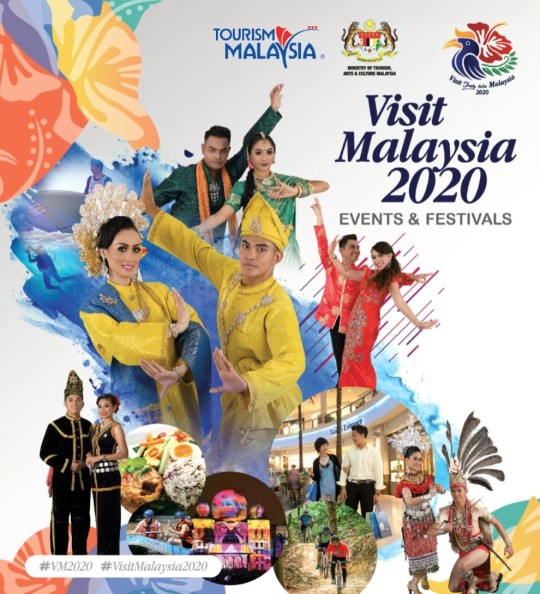
“CUTI-CUTI MALAYSIA”
Malaysia was once ranked 9th in the world for tourist arrivals.The Travel and Tourism Competitiveness Report 2017 ranks Malaysia 25th out of 141 countries overall.
In an effort to diversify the economy and make Malaysia's economy less dependent on exports, the government pushed to increase tourism in Malaysia. As a result, tourism has become Malaysia's third largest source of foreign exchange income, and accounted for 7% of Malaysia's economy as of 2005.
The government agency in charge of promoting tourism in Malaysia is Tourism Malaysia or the Malaysia Tourism Promotion Board (MTPB). On 20 May 1987, the Ministry of Culture, Arts and Tourism (MOCAT) was established and TDC moved to this new ministry. TDC existed from 1972 to 1992, when it became the Malaysia Tourism Promotion Board (MTPB), through the Malaysia Tourism Promotion Board Act, 1992.
In 1999, Malaysia launched a worldwide marketing campaign called "Malaysia, Truly Asia" which was largely successful and brought in over 7.4 million tourists. The extra revenue generated by tourism helped the country's economy during the economic crisis of 2008.

KELANTAN
Kota Bharu means ‘New City’ in Malay which is a bit of a misnomer as this is actually one of the most traditional places in all of Malaysia. Kota Bharu (which is sometimes also spelled Kota Baru) is the capital of the state of Kelantan on the east coast of peninsular Malaysia and many people simply visit it as part of a trip to the lush Perhentian Islands off the coast. Simply using Kota Bharu as an entry and exit point is a shame however, as there is plenty to enjoy here for a few days and you will get to see a completely different side of the country.
The east coast of Malaysia is known for being far more conservative than the west coast and the central region, but this allows you to get a glimpse of a fascinating culture here. This includes beautiful Islamic architecture in the form of graceful mosques and you can also enjoy traditional museums and a range of toothsome local dishes that are unique to the state of Kelantan.
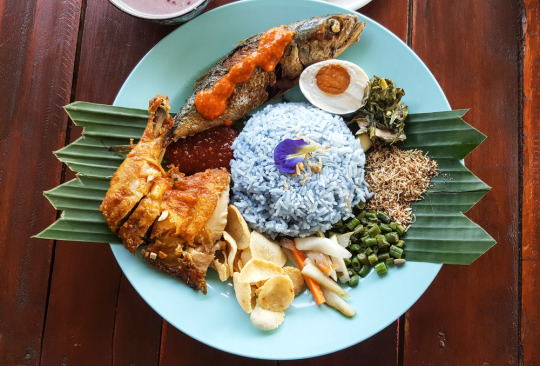
Have breakfast at Restoran Capital
If you want to kick off a trip to Kota Bharu with one of the best breakfasts in the city then head to Restoran Capital where you can try a local favorite called Nasi Kerabu which includes blue rice and a number of delicious curries that you will only find in Kelantan.
A plate of Nasi Kerabu comes with hard boiled eggs and crunchy prawn crackers and you can also get coffee or tea here if you just fancy a drink. Bear in mind that this is more of a breakfast venue than anything and if you arrive after 9 am then the nasi kerabu may already be sold out. It’s that good.
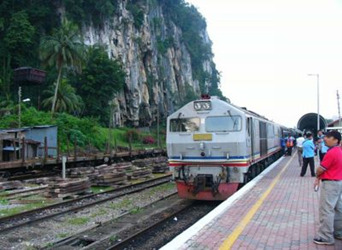
Ride on the Jungle Railway
The Jungle Railway is one of the main reasons why many people travel to Kota Bharu in the first place.The railway runs along the east coast and through the center of Malaysia and passes through Kelantan where it stops at the city of Tumpat.When you travel on the railway, you can spend time enjoying the amazing jungle views and the train carriages hark back to another era when one of the only ways to travel here was by train.
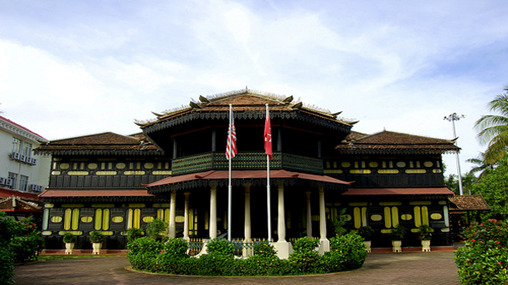
Tour Istana Jahar
One of the best museums in Kota Bharu is Istana Jahar which dates from 1887. As such this is one of the prettiest buildings in the city in its own right and it contains an amazing display of craft objects from the state of Kelantan such as batik pieces which are weaved in the traditional style.The museum will also take you on a walk through a range of local ceremonies such as a circumcision ceremony using diagrams and photographs, and you can even learn about Kelantanese weddings and funerals.If you want to have a drink and look out onto the pretty Kelantan River then consider heading to Bike Station Cafe.Here you will find a number of dishes and drinks available including a range of local snack options like spring rolls called popiah.You can also simply relax with a fruit juice or an iced coffee, but if you are feeling active then there is also the opportunity to rent a bike here (hence the name of the cafe) and zoom up and down the main waterfront promenade.
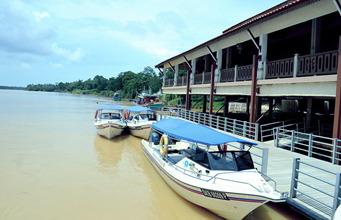
Take a boat ride down the Galas River
The Galas River is one of the main rivers in Kelantan and is also a tributary of the main river artery in the state known as the Kelantan River.Many people come to Kelantan to take a boat ride down the river and this is one of the most magical experiences that you can have in this part of Malaysia.The river snakes through thick areas of jungle and you can choose different kinds of tours such as short jaunts up the river or longer trips that can take several days if you are game.
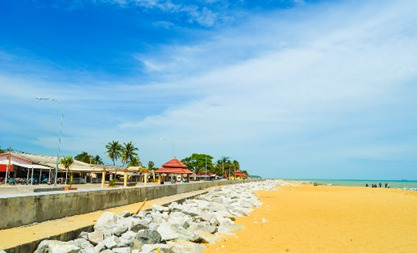
Walk along Pantai Cahaya Bulan
Pantai Cahaya Bulan means Moonlight Beach in Malay and is one of the premium beaches in the Kota Bharu area. Interestingly, it used to be known as Pantai Cinta Berahi which means the Beach of Passionate Love, and so the locals, perhaps fearful of visitors to the beach taking this literally, decided to change the name to something more chaste. Nowadays the beach is usually referred to as PCB and you will find a strip of sand here that backs on to some delightful little restaurants that sell local seafood dishes. This mostly consist of grilled fish called ‘ikan bakar’ so try and time your visit to coincide with lunch or dinner.
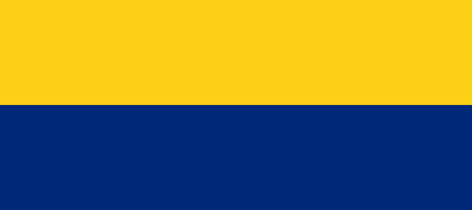
PERLIS
Perlis is the smallest state in Malaysia covering an area of around 800 sq km. It is also the northernmost state on the peninsular and is surrounded by Thailand on the northwest, north and northeast borders and by Kedah state on the south and east.Its full official name is Perlis Indera Kayangan. In the 2010 census it had a population of just 225,000 which was the least populated in Malaysia apart from the Federal Territories of Labuan and Putrajaya.The capital city of Perlis is Kangar and the royal capital, where the Raja has his residence, is Arau. Perlis is the only state where the ruler has the title Raja.There are not a huge number of tourist attractions in the state but Perlis does have a certain rustic charm with green rice fields, quaint kampungs and the unspoilt beauty of its forested border with Thailand.I must admit I have only visited Perlis once so far. Based on my visit, here are my suggestions of what to see and things to do in Perlis.
Interesting places to visit in Perlis

GUA KELAM
One of the most distinctive caves in Malaysia with a 370-metre long limestone cave near the small town of Kaki Bukit (literally 'foot hill') and known as the Cave of Darkness. Gua Kelam Recreational Park is popular for its enchanting 'cave walk' where you can enter from one end of the cave and come out at a different location.
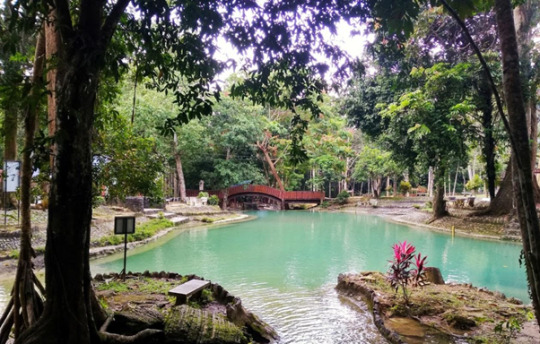
Hutan Lipur Bukit Air
This recreational park is located real near the Perlis snake farm where visitors can experience the sight and sounds of a tropical rainforest or dip their toes in cool streams that goes through the forest.
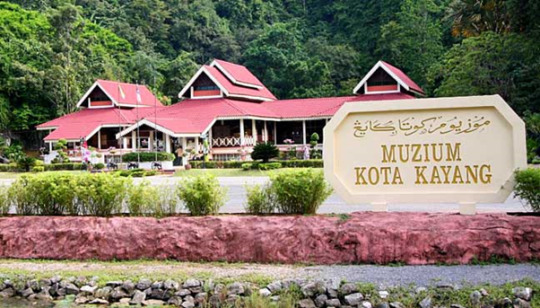
Kota Kayang Museum
A museum that traces back to the history of the Kedah’s Sultanate which had something to do with how Perlis for formed. Things that can be found here include money, artifacts, weapons and some ornaments.
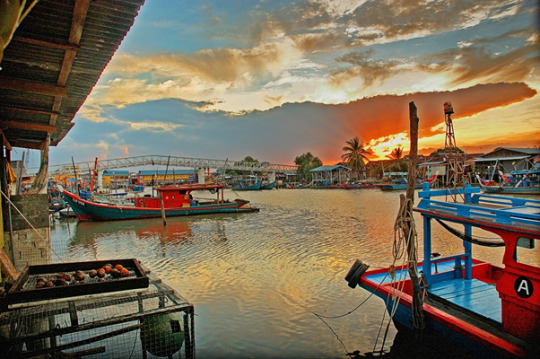
Kuala Perlis
A quint little town that hold one of the entrance to Langkawi Island. Immerse and explore the life that goes on in this small fishing village and its range of amazing seafood.

KEDAH
Kedah is a state in the Peninsular Malaysia and together with Perlis, Perak and Kelantan, they all share a common border with their neighbouring country, Thailand. Kedah is known as the “Rice Bowl of Malaysia” where its rice plains produce more than half of the country’s home grown supply. Kedah’s early history can be traced from the prehistoric period to the archeological site of Bujang Valley, the early Maritime trade of India, Persia, Arabs to the written works of the early Chinese pilgrims and early Chinese records, the Hikayat Merong Mahawangsa or known as the Kedah Annals to the Al-Tarikh Salasilah Negeri Kedah. Kedah was also known as Kedaram, Kidaram, Kalagam and Kataha by the Tamils and Kalah or Kalaha by the Persians.
In the 7th and 8th centuries, the region was dominated by Sri Vijaya. It followed by the Siamese until the 15th century, when the Malay sultanate of Melaka came to power. During this period, the Melakan influences were introduced while the dominant aspects of Kedah’s ancient civilisation began to wane. In the 17th century, Kedah was attacked by the Portuguese when it conquered various parts of Malaysia. In 1821, Kedah fell into the hands of the Siamese and remained under their control until British took over when the Anglo-Siamese Treaty was signed in 1909. Kedah established independence along with the rest of Malaysia in 1957.
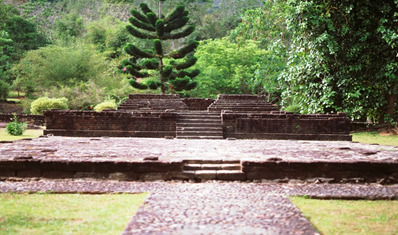
Bujang Valley
Enchanting Bujang Valley in Kedah has ancient ruins and artefacts from a lost Hindu-Buddhist civilisation. This archaeological area was the site of an ancient Hindu-Buddhist kingdom that ruled the region from the 4th century AD. Over 50 Hindu and Buddhist temples or chandis (or candi) have been excavated from various sites in the valley. Artefacts and relics found at various sites, dating back to the 4th century, includes pottery shards, stone statues of Hindu icons, inscribed stone tablets, metal tools, Song and Ming Dynasties ceramic wares, ornaments, beads and semi-precious stones.
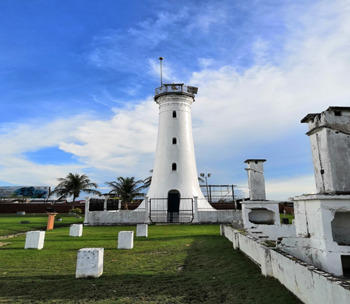
Kuala Kedah Fort
(Kota Kuala Kedah or Kota Kuala Bahang) is sited at the mouth of Sungai Kedah facing Malacca Strait. The fort, surrounded by a moat, is the site of numerous battles that marked Kedah’s struggle against foreign domination and control.
Bukit Hijau Forest Recreation Park - The Bukit Hijau waterfall is familiar to many in Kedah but less known to tourists from outside the state. This park, located in the Gunong Inas Forest Reserve, boasts some beautiful waterfalls along Sungai Mempelam (Mempelam River). The recreational park spreads over 2,100 hectares, with seven waterfalls and natural pools at each fall.
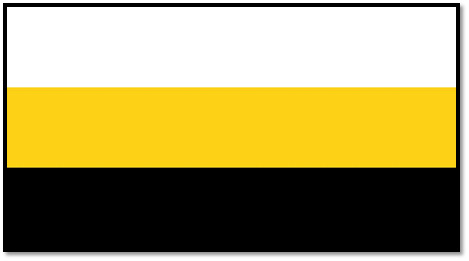
PERAK
It is not easy to pick the top Perak attractions because there is so much to see and do here. Perak is one of the largest states in Peninsular Malaysia with an area of over 21,000 sq. km. stretching from just north of Selangor all the way of the Thai border. Its scenery includes the hills of the Titiwangsa range along its Eastern edge, the unusual limestone karst towers outside Ipoh, some spectacular caves, the huge Temenggor Lake, excellent beaches and the popular resort island of Pangkor.
The historic towns of Ipoh (Perak's capital), Taiping and Batu Gajah contain some fine heritage buildings and places of interest while the Royal town of Kuala Kangsar has some interesting palaces, museums and mosques to admire. Perak was one of Malaysia's main tin mining areas and the country's only surviving tin dredge is a piece of industrial heritage that can still be visited. Add in the Leaning Tower of Teluk Intan, the former colonial hill station of Maxwell Hill, Kellie's Castle and for families, The Lost World of Tambun, and you can see that Perak has much to offer. Top Perak Attractions.Here are my suggestions for the Top Attractions based on those that I have visited so far. I may add more to the list as I explore further.
1. Ipoh Heritage Walk - Explore Ipoh On Foot
Take yourself on my Ipoh Heritage Walk, a walking tour of old Ipoh. I have prepared a map and information on over 30 historic buildings and points of interest for you to explore.
2. Batu Gajah Heritage Trail
Batu Gajah is not nearly as famous as Ipoh but it also has a lot to offer lovers of heritage with many fine and interesting buildings surviving from the colonial era. With this map and information you can do a self-guided tour.
3. The Leaning Tower of Teluk Intan
The small Perak town of Teluk Intan contains Malaysia's answer to the Leaning Tower of Pisa. It is an old water tower disguised to look like a Chinese pagoda and it has a distinct incline due to subsidence. Also try this Walking Tour of Teluk Intan to see more attractions.
4. Pasir Salak Historical Complex
This riverside compound has some attractive buildings and a museum commemorating the assassination of JWW Birch, the first British Resident of Perak.
5. Tanjung Tualang Tin Dredge
Close to the town of Batu Gajah in Perak there is a surviving tin dredge, a colossal industrial relic from the days when Malaysia was the world’s largest tin producer. Read about it here.
6. Gua Tempurong
Tempurong Cave is one of the largest natural limestone caves in Malaysia stretching over 1.5km. It is a show cave with safe walkways and illuminated to reveal its natural beauty. It is easy to get to.
7. Perak Tong Cave Temple
On the outskirts of Ipoh there are many fascinating cave temples to visit. One of the most famous is Perak Tong Cave Temple. The cave contains a 40 foot high golden Buddha and beautiful murals. Climb 450 steps for a great view of Ipoh.
8. Lost World of Tambun
This is an international standard theme park in a beautiful setting near Ipoh. In addition to slides, pools and other water-based attractions, the park has a mini zoo and hot springs.
9. Kellie's Castle
This historic half-built palatial home for a Scottish planter is one of the top Perak attractions. You can find out about its sad history and the legends that go with it.
10. Pangkor Island
This island has some of the best beaches on the west coast of Peninsular Malaysia and busy fishing villages where you can stock up on ikan bilis and other seafood product.
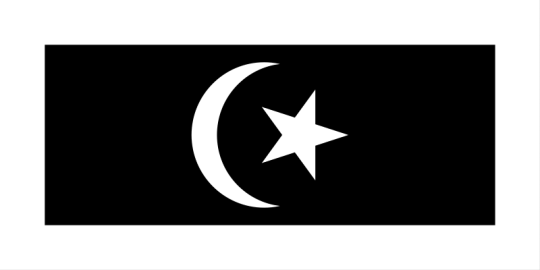
TERENGGANU
Kuala Terengganu is the capital of the great state of Terengganu in Malaysia. The state lies along the coast of the South China Sea and stretches for almost 13,000 square kilometers. Located inside the state of Terengganu you will find beautiful little villages and towns, as well as idyllic islands and of course the star attraction which is the capital of Kuala Terengganu itself.
One of the great draws about a visit to Kuala Terengganu is that is offers such diversity. As well as strips of sandy beach, you will also find a mix of Chinese and Malay culture here thanks to the sizeable local Chinese community. As part of a trip here you can walk around the town and visit pretty heritage buildings and museums, or you spend time mussel picking and squid fishing.
Whatever you choose to do, you will be spoiled for choice when it comes to the food, which mixes Peranakan cuisine with typical Malay dishes and plenty of fresh seafood.
PANTAI BATU BURUK
If you want to find some sand in Kuala Terengganu then head for Pantai Batu Buruk which is one of the most popular beaches in the city.Here you will find a long strip of sand and you can take in the pretty scenery across the water.The beach is crowded at the weekends as local families descend so you may want to give it a miss at this time.It is also conveniently located across from the Cultural Centre Stage where you can watch a cultural show so you may want to check out the schedule at the same time.
Walk through Chinatown
Kuala Terengganu is blessed with a large Chinese population and with that in mind you can visit the pretty area of Chinatown when you are in the city. This part of Kuala Terengganu would have been founded at the end of the 19th century and is known as Kampung Cina in Malay. Here you will find many traditional shops and houses that are built in the Chinese style and you can wander around the winding streets here and enjoy the sights. This part of town is also a heritage sport according to the World Monument Watch Program of UNESCO
Visit Teck Soon Heritage House
You will recognize the Teck Soon Heritage House before you see it as it is painted in three different hues of blue. The house stands in the heritage area of Chinatown and would have been part of the famous Teck Soon Trading Company in the days of old. Now it has been transformed into a museum which will tell you all the history of the Chinese culture in Kuala Terengganu which is called Peranakan or Straits Chinese culture.
Climb Bukit Puteri
Close to the Central Market in Kuala Terengganu you will find a flight of stairs which mark the beginning of Bukit Puteri. The climb to the top is around 200 meters and once you get to the summit you can enjoy beautiful views over the city which make the climb worth it. At the summit of the hill you will also find the crumbling ruins of a fort that would have dated from the 19th century.There is not much left of the fort now except for some ceremonial bells and cannons.
Visit the Ho Ann Kiong Buddhist Temple
Located in Kampung China, which is the Chinatown area of Kuala Terengganu, is the Ho Ann Kiong Buddhist Temple which is one of the most visited spots in the city. The Ho Ann Kiong Buddhist Temple is the primary place of worship for the Buddhist community here and is a riot of color. Make sure to check out the ornate courtyard which is filled with aromatic incense smoke as well as the colorful interior. The varied colors are said to represent the diversity in Kuala Terengganu.
Travel to Pulau Duyung
If you fancy a trip out of the center of Kuala Terengganu then you can head to Pulau Duyung which is the largest island in the estuary across from the city. The island is famous for its fishing boat building businesses and you can come here and see how the boats have been built much in the same style and using the same tools for centuries. Getting to the island is part of the fun as you get to take a local ferry across and take in the cool breeze and views from the vantage point of the water.
Discover Masjid Terapung
Masjid Terapung means ‘Floating Mosque’ in Malay and sits around 10 kilometers away from the center of Kuala Terengganu. The mosque is an ode to classic Islamic architecture and is painted a brilliant white. It stands above a magnificent manmade lake which uses water from the nearby Ibai River and it is especially beautiful around sunset. Locals and visitors alike flock here to take pictures of the gleaming white structure reflected in the limpid waters of the lake and you can visit the mosque outside of prayer times as long as you are dressed modestly.
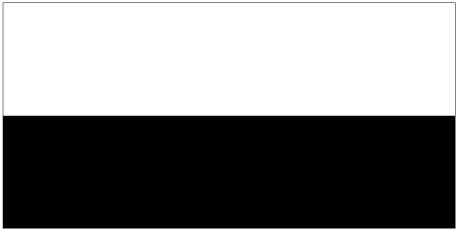
PAHANG
Malaysia, popularly known as the “Land of Mountains” is loved and visited by almost all the tourists all over the world. It exhibits numerous mountains, beaches, towering cliff sides and rain forests. If you are a nature lover, it is a destination meant for you as it has eminent flora and fauna. Overall, it is definitely worth visiting once! Pahang is one of the largest states located in Peninsular Malaysia, it is a major attraction for the tourists visiting Malaysia. It is esteemed for its beaches, mountains and rain forests and it has everything you would want on your vacation! There are a lot of places to visit in Pahang Malaysia such as Selingan Turtle Island, Taman Negara and Gamabang Water Park. Have a look at the most fascinating places to visit in Pahang Malaysia!
5 Best Places To Visit In Pahang Malaysia!
Malaysia is a multi-ethnic and multicultural country where you can experience soul soothing places and amazing things to do. To assist you, here’s a list of the places to visit in Pahang Malaysia so that you can have an enthralling vacation:
1. Selingan Turtle Island
Located some 40 kilometres away from Sandakan, the Selingan Island offers unique experiences and extraordinary sights that no other Malaysia islands does. With turtles swimming around on the beaches, it is nearly impossible to take both your eyes and camera away from them. It is touted as one of the best Malaysia islands.
2. Taman Negara
Taman Negara is a diverse national park situated on the Malay peninsula or eastern Malaysia, it boasts eminent flora and fauna. It is also home to a wide variety of tigers, macaques and birds. It is considered as one of the oldest rainforests in the world with an estimated age of 130 million years. It gives you an insight into the tropical life and it is visited by thousands of tourists every year.
3. Lorong Kulit Flea Market
If you have a penchant for exploring flea markets, head here without a shadow of doubt. It is the biggest flea market in Penang. Also, it is the only one that is operational every day. Isn’t that a big sigh of relief? It sells anything and everything. You will records stashed against books and electrical items placed on study material. There’s nothing you may need that you won’t be able to find here, we promise.
4. Cecil Street Market
Cecil Street Market is the biggest hawker center within the inner city of George Town. It is bustling with people at all times in the day. You may not get a seat here in the peak lunch hours, so make sure to head here early and grab a bite with your coworkers or family. Some of the most famous foods served here include curry mee, pasembur, and fried sago. This market takes up one third of the space of the bigger market complex it is situated in.
5. First Avenue Mall
First Avenue Mall is an environment friendly shopping mall. Interestingly, no plastic is used in the complex. This mall’s style is influenced by European architecture. With an indoor-outdoor boulevard and Arabesque influences, this mall is touted to be one of the best malls in the region. You will have the time of your life here and will not be disappointed by the range of activities you can pursue here.

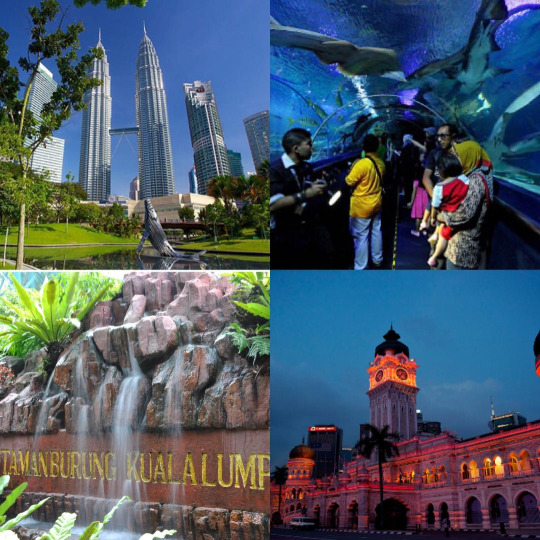
Must Visit Places in Kuala Lumpur
01 Petronas Twin Towers
The most popular tourist attractions in Kulala Lumpur, the Petronas Twin Towers are the tallest twin structures in the world. With a whopping 88-storeys, these feature Skybridge- the double-decker connecting structure between the towers along with the headquarters for Petronas Company and other offices. Other several attractions include Kuala Lumpur Convention centre and Suria KLCC Mall. The towers have Islamic-inspired architecture and the area around them features the well-maintained KLCC Park. You can avail all these attractions and more, by exploring around with the help of a 170 meters elevator inside.
02 Menara KL Tower
Giving tough competition to the Petronas is the Menara KL Tower, which stands high at 421 metres and offers spectacular views of the city from a height of 276 metres, which is much higher than the Petronas’ SkyBridge Viewpoint and it is one of the best places to visit in Kuala Lumpur. The tower’s glistening spindle-like apex can be spotted from anywhere in KL and the Islamic and Persian style architecture is sure to leave you in awe! The tower boasts of the tallest freestanding revolving restaurant, an amphitheatre, cascading pools, fast-food places and gift shops that certainly make it a highlight among the places to visit in KL
03 Batu Caves
A 272-step long trek leads you to this century-old temple in limestone which is probably one of the most popular tourist spots in Kuala Lumpur. There are three big caves and numerous smaller ones here, with idols and statues erected inside. Amongst them, the Cathedral Cave is most frequented for its archaic 100m high arched ceiling and several Hindu shrines within. The others are the Art Gallery Cave and Museum Cave, with statues as well as ancient paintings to admire.
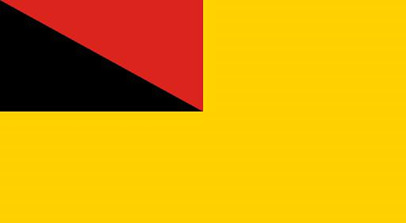
Negeri Sembilan
What are the top Negeri Sembilan attractions?
Negeri Sembilan is one of the smallest states in Malaysia and it is not particularly well known as a tourist area. However there is a lot for the visitor to see and it is well worth taking time to look around. Being located close to the Klang Valley, it means that many of the top Negeri Sembilan attractions can be easily reached on a day trip from Kuala Lumpur. The name Negeri Sembilan means 'Land of the Nine States' after the nine districts, each with their own chieftain, which used to make up the state.
Borders have shifted over the centuries and districts re-organised so that today there are seven districts in Negeri Sembilan, namely Seremban (formerly Sungai Ujong), Port Dickson, Rembau, Jelebu, Kuala Pilah, Jempol and Tampin.
The state is home to Malaysia's Minangkabau culture, a community originally from West Sumatra who settled here in the 15th Century.
The Minangkabau are famous for their unique and elegant architecture with curving, ornate rooflines whose points are said to resemble buffalo horns.
Their society is traditionally matrilineal, meaning that wealth and surnames pass down the female line, although this community, numbering around 300,000, is nowadays fully integrated with the rest of the Malay population.
The ruler of Negeri Sembilan is known as the Yang di Pertuan Besar (He Who Is Greatest) instead of Sultan as in other Malaysian states.
Negeri Sembilan Attractions
The Sumatran influence on the architecture is found in many distinctive and attractive villages in the state with an idyllic rural feel. This makes driving the byways a pleasure. Negeri Sembilan contains some modest sized mountains to hike. It is home to the nation's most popular beach resort and there are plenty of historic sites, museums, parks and more to enjoy.
Royal Museum Seri Menanti
The Royal Museum Seri Menanti is housed in the unique Old Palace building (Istana Seri Menanti) in the small town of Seri Menanti in the Kuala Pilah district of Negeri Sembilan. Seri Menanti is the royal capital of Negri Sembilan state. Negri Sembilan translates as ‘nine states’ referring to the nine territories which made up the confederation from 1773 onwards. The rulers of this state are of Minangkabau origin having migrated from western Sumatra about six centuries ago bringing their distinctive customs and architectural style with them.
This building was constructed between 1902 and 1908 as a royal palace to replace an earlier one which was destroyed by the British in 1875. It was built by two highly skilled local craftsmen, aided by technical drawings provided by the British head of the Public Works Department. This four storey wooden structure was made without the use of nails from chengal, a durable and termite-resistant tropical hardwood, and with ironwood roof tiles. Although the palace incorporates a sloping roofline, which is characteristic of Minangkabau architecture, the design is actually unique to Negeri Sembilan, perhaps with an element of colonial influence thrown in. It served as a palace and official residence of the Negri Sembilan ruling family until a newer brick palace was built nearby in 1932. The whole structure is elevated on stilts and the lowest floor was used as a hall for official audiences, while the second floor housed chambers for the royal family. Above that was the Yang Dipertuan Besar’s private apartment.
The Old Palace
The palace was converted into a museum of royal regalia in 1992 and contains displays of costumes, weapons, furniture and other paraphernalia.
As well as the building itself there are a couple of exhibits in the grounds:
Batu Kasur. This stone slab is a replica of an original in Minangkabau, West Sumatra. It was used to test a royal prince. Before becoming ruler he had to sleep on this stone for a few days while covered with jelatong leaves which irritate the skin. Only Raja Melawar is believed to have passed this test
Batu Bertikam. This is another replica of an original stone in West Sumatra. This one relates to customs of the Chaniago tribe.
Pantai Bagan Pinang. One of the better beaches. At the northern end a river discharges into the sea. The river was not too grubby but no doubt that varies with the weather. Better to avoid that end for swimming although the fishermen seemed to like it. The sand quality was good and clean. A group of happy girls were being towed around the bay on a banana boat. There is plenty of parking here. There are toilets and showers and a shop to rent windsurfers, kayaks, beach volleyball, and life jackets. There is a restaurant and picnic tables.
Pantai Saujana. Fine, white sand and calm, clean water with no rocks hidden under the surface. Jet-skis, speed boats, banana boats for hire. Good parking. Food stalls, toilet and shower available. Trees for shade.
Pantai Nelayan. This beach was a shocker! People were camping up one end but it was filthy with litter further along
Pantai Cahaya Negeri. One of the hotels on this beach, Bayu Beach Resort, claims this is Port Dickson's best beach and I think I would agree. It has a broad expanse of fine white sand and the sea water looks clean. The beach is a bit lacking in eating outlets and facilities unless you are staying in one of the resort hotels lining the beach but there is a food court opposite the Bayu Beach Resort.
Teluk Kemang/Sri Purnama. I have linked these beaches together because it is not clear where one starts and the other one finishes. Teluk Kemang is the busiest and most popular of Port Dickson's beaches partly because of the street market atmosphere in the stalls in front of the beach and the wide variety of food stalls and restaurants. The beach itself has orange sand and the sea water quality is not bad. There are plenty of water sports vendors here. There is a big carpark but it gets very busy at weekends.

MELAKA
A quaint city with an abundance of breathtaking sights and rich heritage, Malacca is easy to get around on foot or trishaw to explore the many places that make it unique. As the unofficial historic capital of Malaysia, Malacca’s most prominent contribution to the Malaysian cultural landscape is the Baba-Nyonya or Peranakan culture.
Possessing an eclectic blend of customs, traditions, food and lifestyle, the Peranakan still thrives in Malacca with a mix of old and new with historical buildings standing side by side with ultra modern shopping centres. From Ayer Keroh’s lush greenery to the Malacca City’s urban landscape, we have found our top ten places in Malacca that no visitor should leave out on their travel itinerary.
A’Famosa is more than just quick photo stop opportunity for tourists. Built in 1511, the settlement used to sprawl across a whole hillside but now only a lone gate (Porta de Santiago) remains. One of the oldest surviving European architectural remains in Asia; it is set beside the Istana ke Sultanan on Jalan Kota.
A’Famosa is perhaps Malacca’s best known sightseeing spot. Originally constructed by Alfonso de Albuquerque (who led the Portuguese invasion on the Malacca Sultanate), the remains of the fort is now a crumbling whitewashed gatehouse and is located downhill from St. Paul’s Church.
Structure of A'Famosa
In the 16th century A’Famosa housed the entire Portuguese administration, including its hospitals, five churches, elongated stockades and four key towers. One tower was a four-storey keep; the others were an ammunition storage room, captain’s residence and an officer’s quarters. The rest of the bastion comprised of townhouses clustered inside the fortress walls. The fort was expanded in 1586 to accommodate Malacca’s growing population.
JONKER STREET
Jonker Street is a small street in Chinatown in the city centre. Along Jonker Street there aren’t a lot of sightseeing opportunities unless you count the noisy Chinese New Year song-and-dance show that takes place this time of year. In fact the only attraction worth getting a quick glimpse of is the historic mausoleum of Hang Jebat – named after the second most skilful of a band of five warriors. The exact age of this grave is unknown but its Acehnese design shows that Jebat was given a warrior’s burial despite his murderous rampage and inglorious death at the palace.
Christ Church Information
Christ Church is located near to Malacca’s Chinatown centre. Across the bridge from the Jonker Street, it is one of the most popular sightseeing attractions in the Stadthuys area. A lot of colourful trishaws (You can pay to ride it) and directly opposite is the Historical Museum and Ethnographical Museum.
The area is stepped in Baba Nyonya culture with opulent ‘Baba merchants’ houses and elegantly-conserved Nyonya restaurants that line the constricted roads. Christ Church is small – once inside, right beside the front doors there is a long table with brochures and religious paraphernalia for sale set up. There are about ten rows of pews before the main altar and the whole place has old light fixtures and plenty of worn-but-well-kept tiles.
Besides its commemorative purpose, Christ Church was constructed due to the fact that when the Dutch first conquered Malacca, they had no place of worship other than St. Paul’s Church, a small chapel built on St. Paul Hill.
Later on, when the British took over Malacca they added a weathercock and bell to Christ Church and transformed it from a Protestant church into an Anglican one. Entrance into the basilica is free; it is not a big building and the interior is dark yet cosy, with dark polished wooden pews that face the altar and large timber crucifixes that hang on the walls. Meanwhile, outside the church is a beautiful collection of potted plants and a colourful group of trishaws lined up for tourists.
ST PAUL CHURCH
The ruins of St. Paul’s Church are at the summit of St. Paul's Hill. Built on the site of the last Malaccan sultan’s istana (palace), it was constructed by Portuguese fidalgo (nobleman) captain, Duarte Coelho, in gratitude to the Virgin Mary for saving his life during a storm at sea.
TAMING SARI
Melaka Menara Taming Sari (Taming Sari Tower) officially opened for business on the 18th of April 2008, Menara Taming Sari is the first and only gyro tower in Malaysia so far. Measuring 110 metres in height, its revolving structure offers a 360-degree panoramic view of Malacca town and beyond.
Located in the popular district of Bandar Hilir on Jalan Merdeka, only 3 minutes’ walk from Mahkota Parade Shopping Complex and Dataran Pahlawan Megamall, the tower is named after the Taming Sari keris, a mythical weapon said to possess mystical powers belonging to the legendary Malay warrior, Hang Tuah. Even the structure’s design follows the shape of the keris, with the peak of the tower resembling the its hilt.
Built using advanced Swiss technology, the tower’s structure is reportedly tough enough to withstand earthquakes measuring up to 10 on the Richter scale. Able to accommodate 80 people per viewing session, which lasts about 7 minutes, the glass cabin hypnotically revolves as it rises from the ground to the top of the tower.
Once it reaches the top, a breathtaking, sprawling view of Malacca as far as the eye can see, up to the Straits of Malacca, is clearly visible, especially in good weather, with the Melaka River running through the grand panorama below.
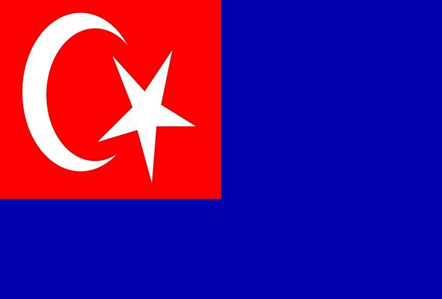
JOHOR
Muar Walking Tour
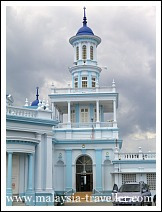
Muar is an interesting seaside town with brightly painted shophouses, some colonial-era buildings and a matching pair of blue mosques on either bank of the Muar River estuary.
Nearby attractions:
Parit Jawa (Seafood)
Grisek Hot Spring
Parit Sulong Bridge (WWII battle scene)
Gunung Lambak
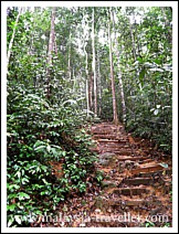
Gunung Lambak is supposed to be an easy climb but for me it was exhausting. I found a nice hotel and restaurant in nearby Kluang.Nearby attractions:
Kluang Town
Zenxin Organic Farm
Air Hitam
Kukup Fishing Village
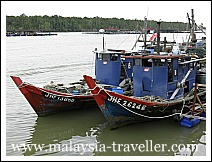
A chance to see a fishing village built on stilts over the sea and to sample some delicious seafood.
Nearby Attractions:
Pineapple Museum
Bugis Museum
Tanjung Piai
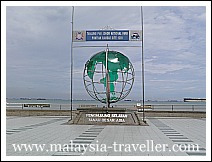
Tanjung Piai is at the southern most tip of mainland Asia. It is located in a small national park where you can learn about a typical mangrove eco-system.
Johor Bahru Heritage Trail
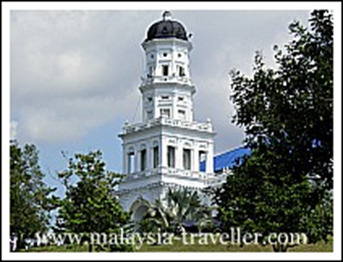
A walking tour around Johor Bahru's historic centre is a good way to experience some of the main attractions in this city.
Kota Tinggi Waterfalls
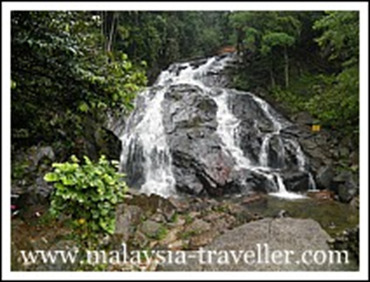
A popular waterfall resort, easily accessible from JB, with natural pools, slides, picnic spots and walkways alongside an impressive waterfall.
Johor's East Coast Beaches
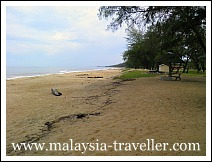
The east coast of Johor is lined with mile after mile of sandy beaches, many of them deserted, such as Desaru, Tanjung Balau, Jason's Bay, Kuala Sedili, Tanjung Leman, Mersing, Teluk Buih, Air Papan and Penyabong. Read about them on my blog.
Legoland Malaysia
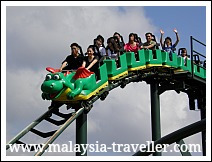
Legoland Malaysia is a world-class family theme park in Johor with over 40 interactive rides and attractions spread over 76 acres.
Johor Premier Outlets
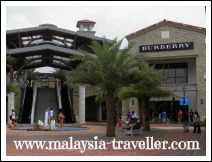
Shopaholics will love this place, an outdoor shopping centre with a collection of over 60 designer fashion, sportswear, shoes, bags, accessories and gift shops selling branded items at direct from factory prices. Not really my cup of tea, but a pleasant atmosphere, plenty of parking and a good selection of places to eat.
Rawa Island
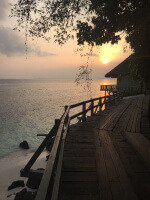
Pulau Rawa is an idyllic tropical island paradise off Johor's East Coast. Read my review of the accommodation, facilities and activities of the island's top hotel, Rawa Island Resort.
3 notes
·
View notes
Photo

Kota Kuala Muda situated at the mouth of Sungai Muda, in the south of Kedah. The city itself has a significant historical value. It is estimated to have been built in the 18th Century. In its heyday, the city was an important trading post in Asia. Goods traded here included silver and spices that attracted traders from China, India, Portugal, Netherlands and England. The lack of land transportation contributed to the it’s prosperity. If you’re in this area, you might to consider to visit the Bujang Valley (Lembah Bujang), where it is home to an archaeological museum exhibiting collections and ruins which evidence the existence of a thriving civilisation in this area from the 3rd to the 14th centuries AD. Lembah Bujang was called 'Nusantara' and its strategic position was known to traders from China, India and the Middle East... 😉 #TravelInfo #TravelTips #Throwback #November2019 #Travel #Vacation #Trip #Wanderlust #GoExplore #WonderfulPlaces #InstaTravel #Landscape #LandscapeArchitecture #Village #Kampung #ProductiveLandscape #Agriculture #PaddyFields #Sunset #Dusk #KotaKualaMuda #SungaiPetani #Kedah #Malaysia #PeninsularMalaysia #SouthEastAsia #Asia (at Kota Kuala Muda, Kedah, Malaysia) https://www.instagram.com/p/B-2k5orHmUU/?igshid=1oxn1csky9zbc
#travelinfo#traveltips#throwback#november2019#travel#vacation#trip#wanderlust#goexplore#wonderfulplaces#instatravel#landscape#landscapearchitecture#village#kampung#productivelandscape#agriculture#paddyfields#sunset#dusk#kotakualamuda#sungaipetani#kedah#malaysia#peninsularmalaysia#southeastasia#asia
0 notes